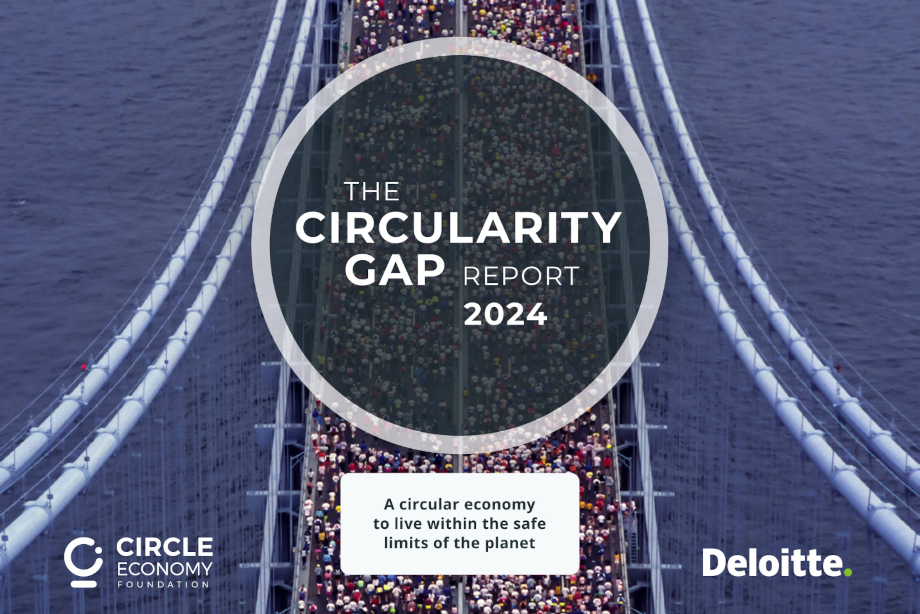CIRCLE ECONOMY FOUNDATION “CIRCULARITY GAP REPORT 2024”

Circle Economy Foundation, in collaboration with Deloitte, has published ‘The Circularity Gap Report 2024’.
Globally, the use of secondary raw materials by production systems, an essential criterium for defining circularity, has steadily declined over the last five years, from 9.1% in 2018 to 7.2% in 2023 (a contraction of 21%). In the same period of time, 500 billion tonnes of materials were consumed, corresponding to 28% of all resources consumed since the beginning of the 20th century.
Nutrition, housing, manufactured goods and transports&mobility are the global systems that exert the greatest pressures on the Earth system, pushing us beyond the safe limits of 6 out of 9 planetary boundaries.
Wealthy countries could achieve the greatest impact by adapting regulations in the building and production sectors: promotion of the reuse of buildings (and their components and materials), development of certification and warranties for secondary building materials, setting standards for product durability, and strengthening legislation on the right to repair.
In middle-income countries, the promotion of agriculture and circular production will be a top priority: public bans and limits on pollution, extended producer responsibility schemes, minimum quantities of recovered materials for all new production.
Low-income countries could prioritise sustainable development through circular policies in construction and agriculture: debt reduction, improved access to development and transition capital.
More info at the following link.
